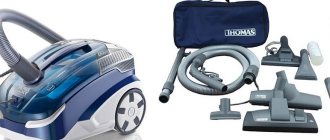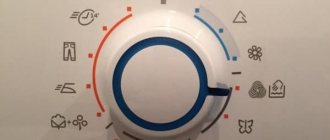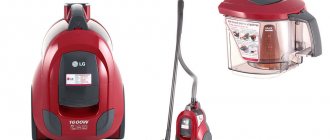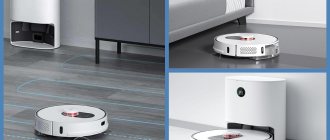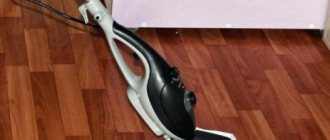- home
- Articles
- Vacuum cleaners for swimming pools. Why are they needed?
To maintain a clean and attractive pool, a set of measures is required. One of them is to clean the bottom and walls of the bowl with a vacuum cleaner. It will help provide effective, quick care that everyone can handle. If you purchase an automatic model, the time spent on caring for the cleanliness of the pool is reduced to a minimum.
Is a vacuum cleaner really necessary?
When equipping their pool with modern water filtration systems, many owners believe that they do not need a vacuum cleaner. This opinion is wrong. When filtering water, it enters the nozzles of the filter unit mainly from the upper and middle layers of the pool. In this case, the bottom and lower layers of water take part in the process to a minimal extent. As a result, it is here that particles of dust, sand, hair, and other contaminants accumulate, which spoils the appearance of the pool and can lead to the formation of an unpleasant coating. The same applies to the walls of the bowl.
Regular use of a vacuum cleaner eliminates this problem and effectively collects debris from the bottom and dirt from the walls, directing them to a filter or a special collection box.
The main advantages of the vacuum cleaner:
- Ease of use;
- The ability to effectively clean all surfaces, including steps, decorative elements, corners;
- Save time.
A high-quality vacuum cleaner quickly pays for itself, because the services of professional cleaners will ultimately cost much more. The ability to use it without draining the water is also a plus, helping to save resources and money.
How does the device work?
Water vacuum cleaners are divided into the following types:
- Vacuum (automatic, manual, semi-automatic type);
- Piston (manual models).
Vacuum device
The device acts like a vacuum suction cup, collecting sand and debris from the bottom of the bowl. The device has brushes. The vacuum is created by a running pump connected to the filter.
The vacuum cleaner consists of:
- hose;
- rubber brushes;
- filter (single or double);
- battery or engine.
An automatic vacuum cleaner works without human intervention. It drives contaminated water through itself and the filtration unit, ridding it of suspended particles.
Used only for cleaning the bottom.
The semi-automatic model attaches to the skimmer and removes large debris. The handheld vacuum cleaner is battery operated. Electrical parts are located above the water and are reliably protected from water ingress .
Hoses and rods are attached to the skimmer or nozzle. It is important to use a sand filter. You can additionally buy attachments for the rod for convenient and high-quality cleaning of the pool. A vacuum cleaner for pool cleaning is designed to remove small and large debris. This purifier is used in different types of domestic ponds with all types of lining.
The advantages and disadvantages of vacuum vacuum cleaners for pools are discussed in the video:
Pistons
These underwater vacuum cleaners use a piston type pump. It operates from the user's manual input. The main nozzle is equipped with a wide nozzle and a brush. The device does not require electrical energy. Before cleaning, you can connect the device to a watering hose.
Cleaning with a piston vacuum cleaner is a labor-intensive process . The owner must manually operate the unit.
The set includes nets made of mesh fabric to collect dirt from the surface. The vacuum cleaner is safe to use due to its simple design.
Which to choose
The models of pool vacuum cleaners on sale differ in a number of characteristics, among which the most important is the principle of operation. The cost of the device and the comfort of its use largely depend on this.
Manual
The simplest option is a handheld vacuum cleaner. It consists of a telescopic rod equipped with a handle, a corrugated hose, and a brush with a special design.
There are several types of models that differ in operating principles:
- They are connected directly to the skimmer or vacuum nozzle using an adapter, they work due to the traction force of the filtration system;
- They are equipped with a motor, an electric cable, a waste container, and can work autonomously;
- They work on the principle of a piston and are activated by the movement of the owner’s hands.
The first two are easier to use, but the second is perfect for small bowls that are not equipped with filters.
To clean the pool, simply run a brush over all surfaces. As a result, water along with contaminants will enter the filter, undergo purification and return to the bowl already free of dirt. If a piston model is used, then the contaminants are collected in a special bag, which is attached to the rod. The hand-held device is inexpensive, does its job perfectly, and can be used in pools of any size and design.
Semi-automatic
Semi-automatic models have more advanced brushes that can handle tasks quickly and efficiently. In addition, the design of such models includes a special collection bag for large particles of debris. But the most important difference from manual options is that such a vacuum cleaner can clean the bottom independently, that is, without human intervention. But it will no longer be able to cope with vertical surfaces; they will have to be cleaned manually.
Auto
An automatic robot vacuum cleaner is expensive, but it is capable of performing high-quality cleaning of the pool without the participation of the owner. It is enough to simply set the operating parameters of the device to its software, and it will independently clean the surfaces of the bowl, turning on and off according to a specific schedule. Most models are equipped with remote controls, allowing, if necessary, to quickly reprogram the device depending on the required operating parameters.
Robot vacuum cleaners can be either completely autonomous or connected to the pool’s life support system.
When choosing the first option, it is important to pay attention to the following parameters:
- The length of the electric wire - it must be greater than the length of the reservoir;
- Productivity - the speed of cleaning and resource consumption depend on this indicator;
- Permitted immersion depth;
- Duration of continuous working cycle;
- Types of filters used;
- Availability of additional attachments for working with different surfaces.
Is there a difference in cleaning the walls and the bottom? What is it?
The difference between cleaning the walls and the bottom lies in the choice of nozzle and the correct algorithm of actions. When cleaning the sides and bottom of the bowl, it is important to follow the following sequence:
First, the walls are cleaned using a telescopic rod and selected brushes for vertical surfaces.- Then the bottom is cleaned - you need to select a brush for the bottom, use a hose and a telescopic rod.
One part of the hose is inserted into the hole in the brush, and the second into the nozzle for the vacuum cleaner.
Vacuum cleaners come with different types of receiving devices for cleaning:
- walls - wide flat brushes for vertical cleaning;
- bottom – brushes on wheels;
- corners - narrow receiving devices with side fibers.
To clean an uneven bottom, for example, a Jacuzzi, other types of nozzles are used.
How to properly use a pool vacuum cleaner
In order for the results from using a vacuum cleaner to be positive and the pool to sparkle clean afterwards, it is important to use the device correctly and not to forget about the features of its use.
Cleaning should always begin with removing from the surface of the water, as well as from the bottom, large debris, toys and other objects that can get into the hose, clog it, and also lead to serious damage.
Before using a handheld vacuum cleaner, you must lower the brush into the water and wait until the system is completely filled with water. Only after this can you begin cleaning the surfaces. Do not remove the brush from the water while working.
The sequence of actions when cleaning any pool, both inflatable or frame, and stationary, should be as follows:
- Stage one is cleaning the walls of the bowl, in which special attention is required to the waterline, that is, the place where the edge of the water comes into contact with the bowl;
- The second stage is cleaning the joints between tiles, corners, and decorative elements;
- The third stage is collecting garbage from the bottom surface.
At each stage, you need to work slowly and carefully, visually dividing the surface into sections and carefully processing each of them. When cleaning the bottom, you should move the brush carefully so as not to stir up the water or raise accumulated sediment. Otherwise, cleaning will not be effective and will have to be repeated after a short time.
If we are talking about a robot vacuum cleaner that does all the work itself, then not much is required from the owner. You just need to carefully read the instructions, make the necessary settings, and the device will clean the pool on its own.
Safety precautions
A video about how to vacuum a pool notes that when cleaning it is necessary to follow the rules that will prevent damage to the unit or injury to people:
- When immersing the vacuum cleaner in water, you must first wait until all the air comes out of it, and only then press the power button.
- At the end of cleaning, you should first turn off the pump and then remove the unit from the tank. Otherwise, air will get inside the structure, which can lead to damage.
- Before putting the manual device into operation, you must remove documents, money, phones and other items from your pockets. During the cleaning process, the user runs the risk of bending too low or even falling into the pool, which can damage valuables.
The electronic components of water vacuum cleaners are reliably insulated, so the likelihood of receiving an electric shock when working with the device is minimal. But the rules prohibit the user from diving into the tank during cleaning or allowing other people to be in it. Any accidental malfunction can make the cleaning unit very dangerous.
Manufacturers
Nowadays there are models of vacuum cleaners for swimming pools from different manufacturers on the market. They differ in cost, technical characteristics and operating conditions. Choosing an acceptable option can be difficult, but there are a number of manufacturers whose products are deservedly trusted and in demand.
Among them:
- Intex;
- Emaux;
- Bestway;
- Ultramax;
- Zodiac;
- Dolphin;
- Mountfield;
- Watertech;
But even these manufacturers may have models that do not have the best performance and characteristics. Only the brand should not become decisive when choosing, but there are still more chances to purchase a quality product from a well-known manufacturer.
Kinds
Pool vacuum cleaners, the purpose of which is to clean an artificial reservoir from dirt and silt, come in three types:
- manual - the simplest and cheapest, suitable for inflatable and small frame structures. Anyone can buy a vacuum cleaner like this for the pool;
- semi-automatic. The quality of cleaning they provide is higher than that of manual ones. In addition, there is no need to go around the pool with a brush, but, of course, such a vacuum cleaner for a pool is more expensive;
- robots, i.e. automatic vacuum cleaners. Robot vacuum cleaners for pools are the most modern devices that can work without human involvement.
conclusions
Which vacuum cleaner to choose for a pool can only be decided by its owner, but when making the final choice, you should focus on a number of nuances and preferences.
You should buy a manual vacuum cleaner if:
- A relatively small budget is allocated for the purchase;
- The reservoir is small in volume and shallow;
- The owner has time for regular manual care.
Handheld vacuum cleaners are great for cleaning small private pools and ponds. It is optimal to purchase them if the volume of the bowl does not exceed 40 cubic meters. If the bowl is larger, then it will take too much effort and time to clean. When choosing, it is important to choose the right length of the rod and hose in order to be able to easily clean the most inaccessible places in the future.
The disadvantages of manual models include the fact that the most effective ones must be connected to a pool filtration system, which not everyone has. And their main advantage is the cost, starting on average from 1,500 rubles.
Automatic and semi-automatic vacuum cleaners are an option for pools of large volume and depth. The cost of the devices is noticeably higher, but they can do all the work independently. At the same time, the quality of cleaning in most cases will be higher than that of more inexpensive manual models. If you want the pool to give only positive emotions and be used exclusively for relaxation, then you should choose a robot vacuum cleaner.
Recommendations when choosing a device
- If you don’t like routine, labor-intensive work, then choose automatic models that will save time on cleaning the water tank.
- For small pools, you can use handheld vacuum cleaners.
- If you have a limited budget, it is better to purchase a manual or semi-automatic device.
- Cheap robotic vacuum cleaners don't last long.
- Semi-automatic models with hydraulic traction can regulate the speed of water flows.
- Autonomous robots are suitable for pools made of any material.
Watch a video about cleaning a swimming pool and using a vacuum cleaner for it
Our recommendations
The most affordable option is the WP 240 LS handheld pool vacuum cleaner. This is a simple device that, using an adapter, connects to the pool filtration system and quickly removes contaminants. The kit also includes a net with a bottom collection. The hose will have to be purchased additionally, since it is not included in the kit.
A slightly more expensive option is the Emaux Econom vacuum cleaner. Its complex includes a 2 x 1.8 meter rod, a 9 meter long hose with a diameter of 38 mm, and an Emaux Economy CE302 vacuum brush.
For larger pools, the Emaux Deluxe manual model is ideal. It is equipped with a longer rod of 2x2.4 meters and a heavy-duty flexible hose 10.7 meters long, which will allow you to comfortably clean large bowls. Also included is the Emaux Deluxe CE304 vacuum brush.
To care for a pool that is not equipped with a filtration system, a piston-type vacuum cleaner, for example, the Game 4800-6 PDQ model, is suitable. Its operation is based on the piston principle, so cleaning the pool with this device may require some effort and skill. The main advantage is that there is no need to connect to an electric pump. This is an excellent option for a small inflatable or frame pool, which can be cleaned with such a vacuum cleaner without regularly changing the water.
If you have the opportunity to spend more and want to partially free yourself from caring for your pool, you should consider purchasing a semi-automatic model. The Emaux CE306A SHOWA semi-automatic vacuum cleaner is capable of high-quality vacuum-mechanical cleaning of the pool, connects to a skimmer, and operates easily and silently. The model is suitable for both sunken pools and those installed on the surface.
Mistakes and how to avoid them
To avoid common mistakes when operating a vacuum cleaner, you can use the following tips:
Do not turn on the device until it is completely immersed in water. Failure to comply with the rules may result in damage that will not be covered by the warranty.- Do not remove the device immediately after cleaning - the motors must cool in water for 15 minutes.
- Do not remove the vacuum cleaner until it is unplugged.
- Do not clean until the water calms down - the dirt should settle on the bottom and walls.
- During use, do not make sudden movements so as not to disturb the water.
- Clean the filters before switching on and after use.
You will find a lot of important and useful information about pool vacuum cleaners in this section.
Devices with a piston mechanism
They fully justify the name “manual”, because... Instead of an electric motor, they use a piston pump, which is driven by muscular force.
Another difference between a pool vacuum cleaner is the nozzle, which has a wider nozzle. The device is completely autonomous, i.e. not requiring electricity - this is its main advantage.
This is good, but we must not forget that the cleaning process with such a device is very labor-intensive, since the entire volume of contaminated water has to be pumped manually.
